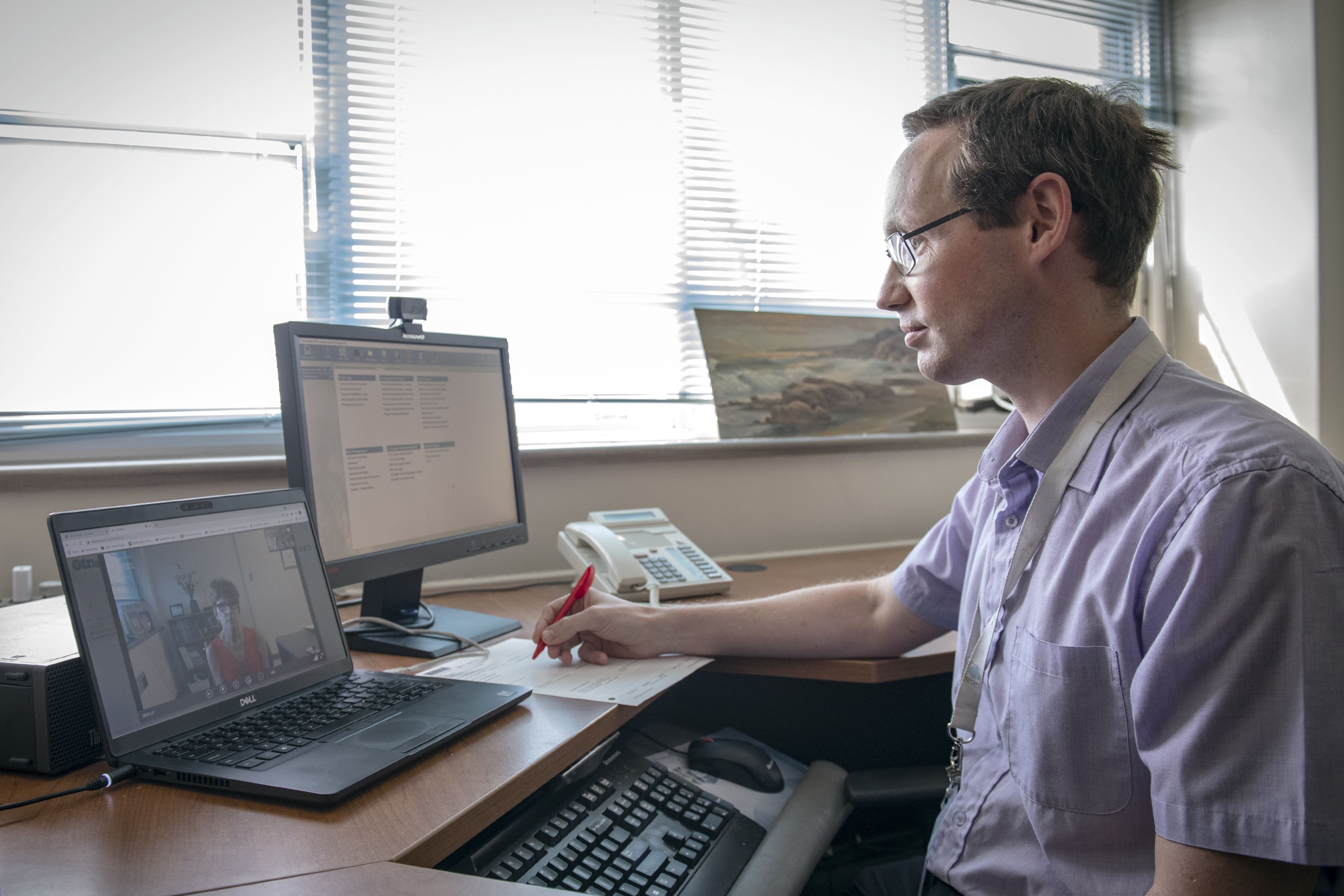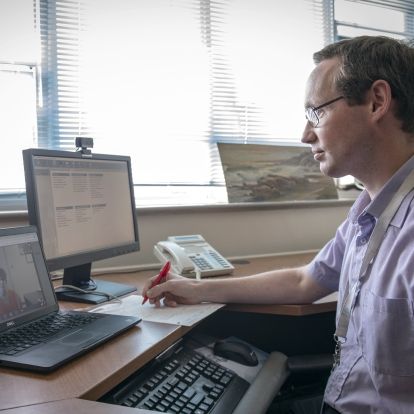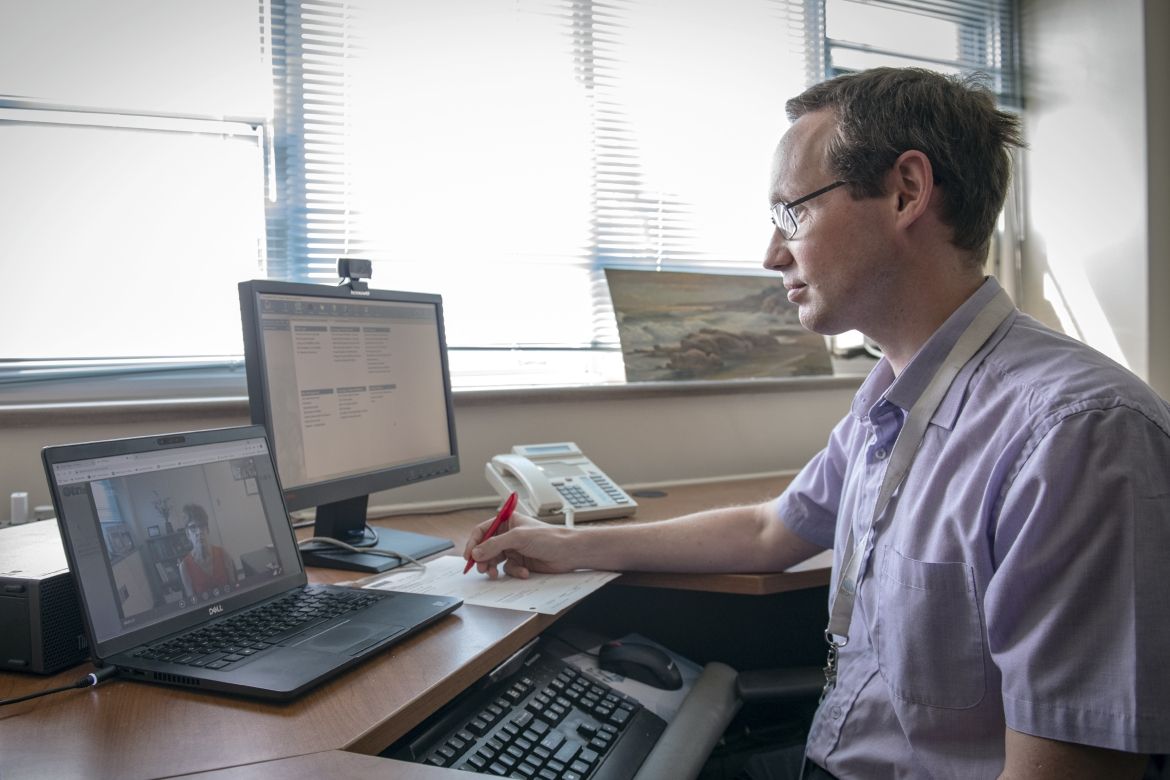Effective immediately masking is required for everyone when present on all inpatient units, in the Emergency Department (ED), the Urgent Care Centre (UCC), and the Children’s Outpatient Centre (COPC).

For many patients in southeastern Ontario, seeing a specialist at Kingston Health Sciences (KHSC) during the COVID-19 pandemic meant no longer having to make a trip to the hospital for an in-person clinic appointment. Instead, appointments often included the use of a laptop, iPad or smart phone, as medical teams adopted virtual care across the hospital as stay-at-home orders were in effect.
According to recently published research conducted by neurologists at KHSC, virtual care has become a particularly effective option for patients with epilepsy. Epilepsy is a common neurological condition; one out of every 26 people will be diagnosed with epilepsy at some point in their life. One in 100 people currently have a diagnosis of epilepsy.
“As the district epilepsy centre for southeastern Ontario, patients often have to drive long distances to come for in-person clinic appointments,” says neurologist Dr. Lysa Boissé Lomax. “This is particularly difficult as many people with epilepsy are unable to drive and require a caregiver to come with them. Many are also unable to work full-time jobs, so they often fall into a lower socioeconomic category. With virtual care they don’t have to take an unpaid day off work, pay for gas and parking, and drive for hours to come see me.”
For patients with epilepsy, there is also an increased risk of being diagnosed with a mood disorder or autism, which can make in-person appointments more difficult. In general, individuals who are neuro-divergent can be more sensitive to light, sound and new surroundings, which can make it harder for them to leave their homes and their normal routine.
The study, which began before the pandemic, gained steam once the stay-at-home orders began in Ontario, with 100 per cent of KHSC epilepsy patients being transitioned to virtual care.
“I thought it was a pretty cool concept because it works so well for our patient population,” says neurologist Dr. Garima Shukla. “Since it was new, we decided to collect information on patient satisfaction. We surveyed patients after each virtual appointment to ask how it felt for them. Eventually, it was working so well I was able to give away some of my physical space for in-patient clinics, creating more space for physicians who had patients that required in-person appointments.”
The virtual clinics work particularly well for patients with epilepsy because physicians rarely need to conduct physical exams for this condition.
“We’re looking for eye movements, movement of their extremities, monitoring their walking, as well as looking for side-effects from medications such as skin rashes,” says Dr. Shukla. “This can all be observed on camera.”
Virtual appointments had one more benefit that wasn’t necessarily expected ahead of time; shorter wait times.
“The difference has been dramatic. On average my wait times are down to approximately six months, and urgent cases can be seen in about two weeks,” says Dr. Boisse Lomax. “The biggest hurdle moving forward is internet bandwidth in rural communities. We need to advocate for local governments to continue to work to improve bandwidth as the patients that will benefit the most from virtual care often live the furthest away.”
The findings from this research have recently been published in the Canadian Journal of Neurological Sciences and Epilepsy Research.
“We believe what we have found is applicable to other centres that care for people with epilepsy,” says neurologist Dr. Gavin Winston. “We’ve shown that we can do all the things we need to for this patient population virtually, and other centres could replicate these results.”
Drs. Boissé Lomax, Shukla, and Winston are all Southeastern Ontario Academic Medical Organization (SEAMO) funded physicians in the Department of Medicine. If you are a physician looking for more information on how to get started using virtual care for your patients, check out SEAMO’s digital health webpage.
Gallery


Dr. Gavin Winston was one of several neurologists who took part in the study of virtual care for patients with epilepsy



